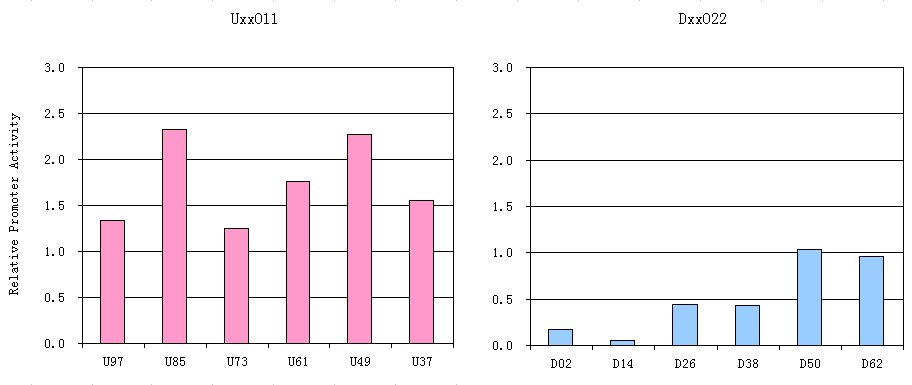USTC/OperatorPosition
From 2007.igem.org
(Difference between revisions)
m |
m |
||
| Line 1: | Line 1: | ||
| + | == Systematical test of Positioning effects == | ||
Operator positioning plays a role in determining in vivo level of repression.[[USTC/OperatorPosition#References|[1]]]Both operators with strong and weak repression are required to the gates . So we tested the positioning effects systematically. | Operator positioning plays a role in determining in vivo level of repression.[[USTC/OperatorPosition#References|[1]]]Both operators with strong and weak repression are required to the gates . So we tested the positioning effects systematically. | ||
[[Image:USTC_RelativePromoterActivity.png|thumb|600px|center|'''Figure 1''' Left: the influence on the promoter’s activity when a single operator is at a different position upstream of the consensus sequence. | [[Image:USTC_RelativePromoterActivity.png|thumb|600px|center|'''Figure 1''' Left: the influence on the promoter’s activity when a single operator is at a different position upstream of the consensus sequence. | ||
Revision as of 06:10, 26 October 2007
Systematical test of Positioning effects
Operator positioning plays a role in determining in vivo level of repression.[1]Both operators with strong and weak repression are required to the gates . So we tested the positioning effects systematically.
References
1. Elledge, S. J. & Davis, R. W. (1989), 'Position and density effects on repression by stationary and mobile DNA-binding proteins.', Genes Dev 3(2), 185--197.

